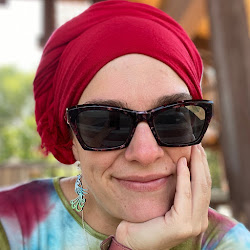But last night at Erev Rosh Hashanah services, the rabbi gave probably the most poignant explanation for why all congregants should stand during the kaddish. He told the congregation about an article he had read about the seqouias -- the tall trees that grow thin and high. The roots of these trees are pretty much at surface level, that is, they do not grow very far below the immediate surface. So how do these trees stand so very tall when threatened to be blown over by the smallest breeze? The roots are intertwined across entire forest areas. The roots lace together, creating a strong, solid structure, a base of root upon root that allows each tree to hold his neighbor up, and in turn, to hold up the entire collection of sequoias. Without one, they all would falter.
How appropriate is this? How beautiful an analogy for why a congregation should stand, arms intertwined and souls laced together tightly in a sanctuary space with those mourning and those not mourning, simply to support one another in a time of extreme sadness? Like the sequoias, Jews, too, should interlace themselves, standing tall and help one another brave the wind that blows soft, then hard, across our cheeks.






